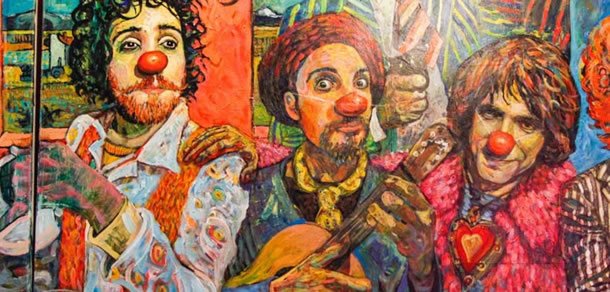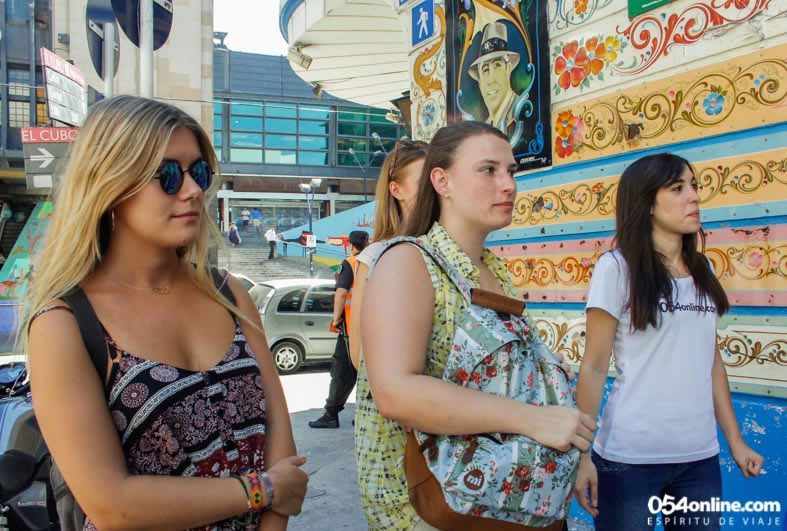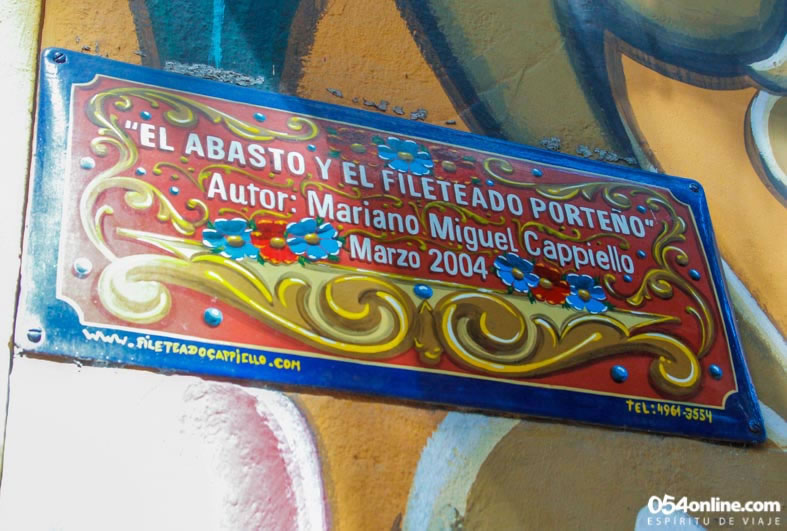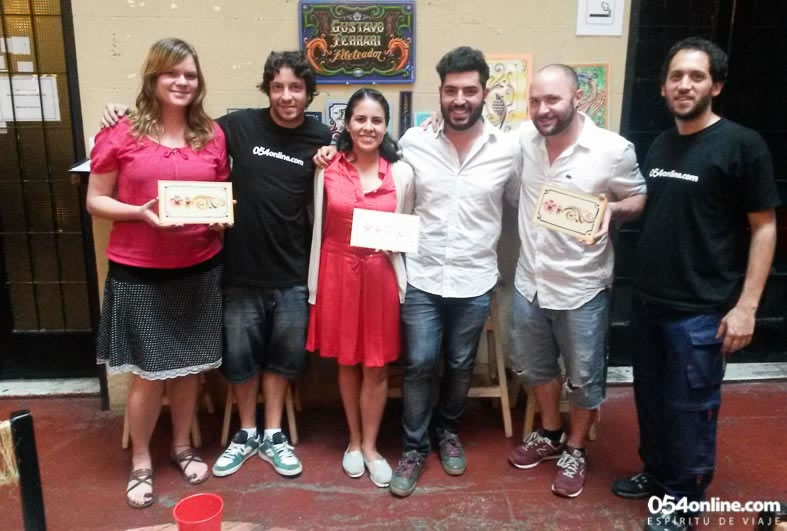
After participating in a Tourism Congress where the people from 054 met, they told us about the activities they did. I was very interested in the information about the ‘Fileteado Porteño Tour 054’. How could I know so little about my own city? How could I not know the interesting history? The only thing I knew was the ‘filetado’ I have seen previously in the old buses. I got very curious and thus I participated in the tour. We met in the street Carlos Gardel and Anchorena at the corner of the sign Shopping Abasto. My first surprise was that there were more foreigners in the tour than Argentineans!
The first thing they told us is that in April 2006, the local ‘filete’ was declared property of Buenos Aires, and at the moment there is a project to declare the style property of human culture at UNESCO. I yet have a lot to learn, there is much more to it than the collective painting. The apprehensiveness was not only coming from me, everyone was excited and ready to start the tour and see how the ‘filetado’ grows to be part of the city. Step by step we were told that the word originates from the latin word ‘filo’ that signifies ‘thread’ and therefore ‘filetado’ means ‘decorated thread’ and it definitely fulfills the decorative part. The ‘filetado’ revolutionized with its forms and colors in the city of Buenos Aires beginning of the 20th Century. This activity was born around the same time as the tango. Together they converted into a symbol of Buenos Aires’ identity.
The tour continued through the streets Abasto and particularilythe Zelaya passage. There we got told about the history of Tango in relation to Carlos Gardel, the first performer of Tango. We went to the museum of his homage where we were able to observe the whole life of the singer, compositor and actor.
After the museum visit we met in the street Jean Jaures. There we were told that in year 2004 the museum Carlos Gardel organized a competition about the ‘Abasto and fileteado porteño’ with the goal of regaining importance and value. Only when strolling one can realize how the 6 ‘fileteadores’ that participated in the competition achieved to imprint life in the streets of Abasto.The outsides of the houses are decorated majestically.
When we stopped enjoying the beautiful decorations of the houses and shops we went to Cultural Conventillo Abasto. To my surprise, Gustavo Ferrari, a professional ‘fileteador’ invited us to make our own ‘filete’ with brushes and a piece of wood. To make it in the presence of a professional ‘filetador’ was a challenge. He explained us even though the technique is extremely stretched It has to be very detailed and requires a lot of patience. That part of the tour was filled with laughs, chats and and apprehensiveness. Nevertheless, something was missing. Suddenly I realized what it was. Then the mate appeared with dulche de leche and churros. We felt more like porteños and Argentineans then ever.
To finish the tour we all took a group picture to never forget the shared moments with the other people and furthermore we got to take our own ‘filete’ home with us and therefore our own part of the culture porteño.
In all honesty every minute of the 3 hour – tour was worth it. The guide brought across his passion for the ‘fileteado’ and the Tango in an incredible and unique way. The tour made me want to start ‘filete porteño’ classes immediately. Furthermore this tour is the only tour of popular art in Buenos Aires that presents an art movement which is a typical icon for the city. On top of that it still is a very beautiful style of art. I doubtlessly would repeat this experience to get a deeper understanding of this beautiful part of history in the culture porteño.
Erika, tourism student



